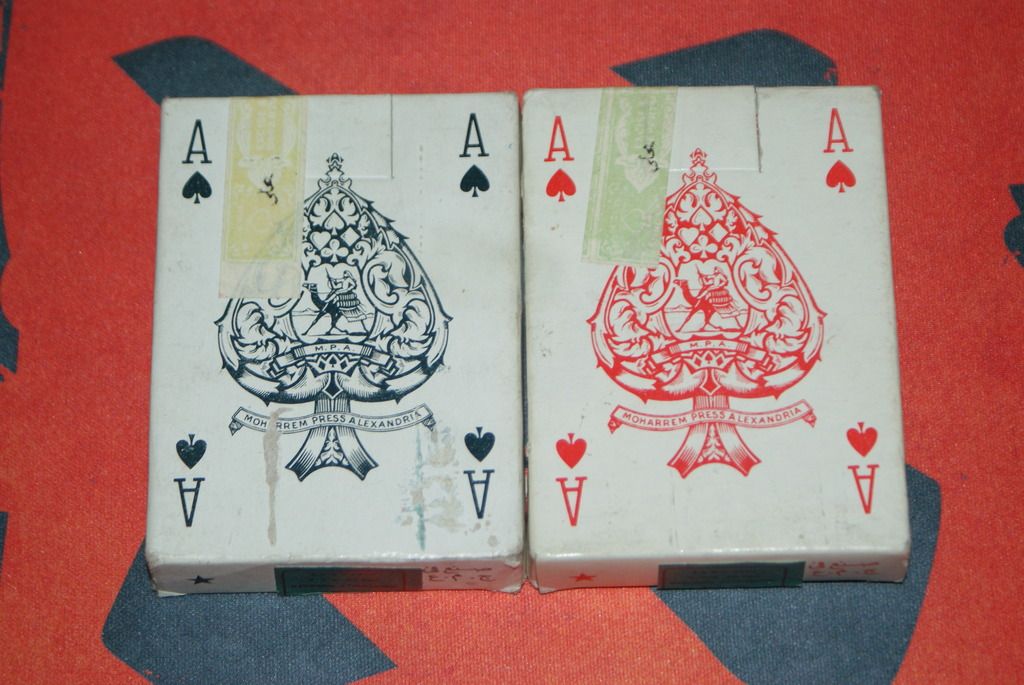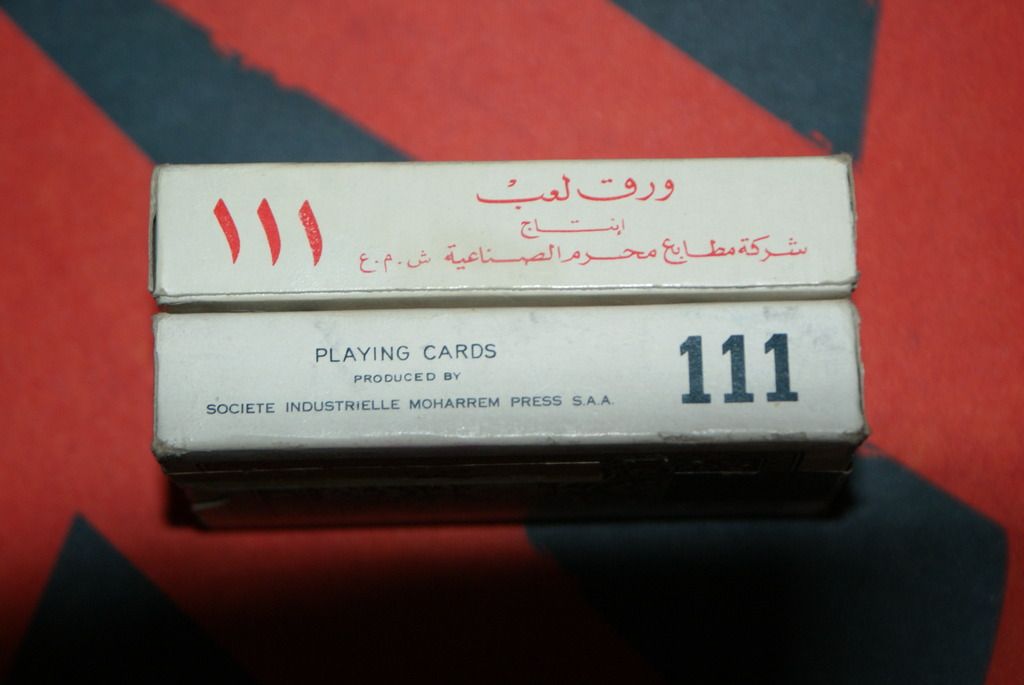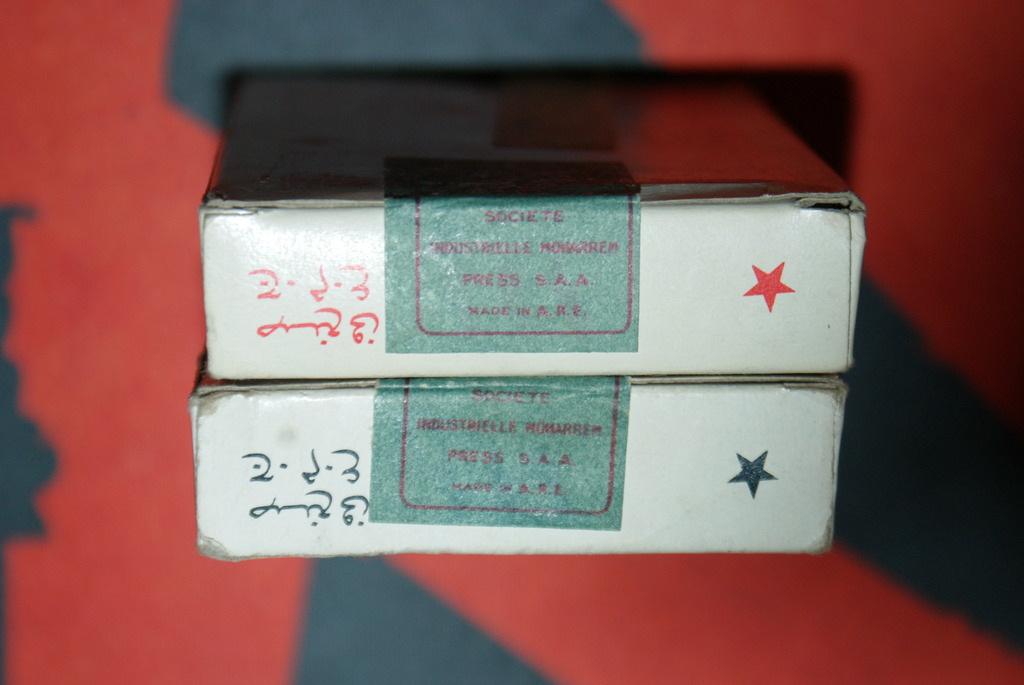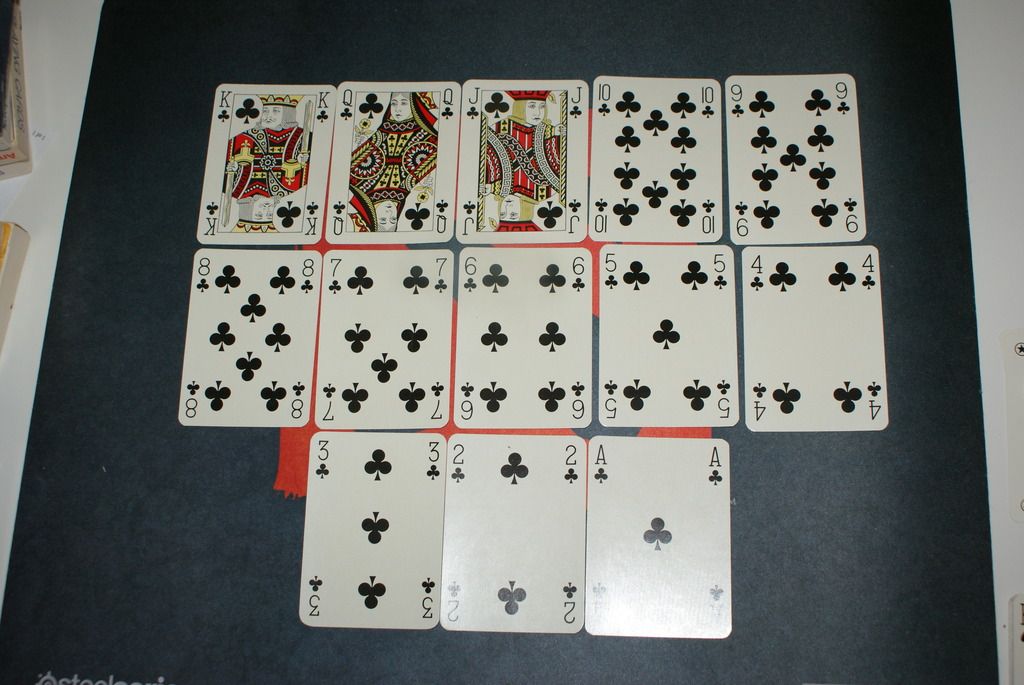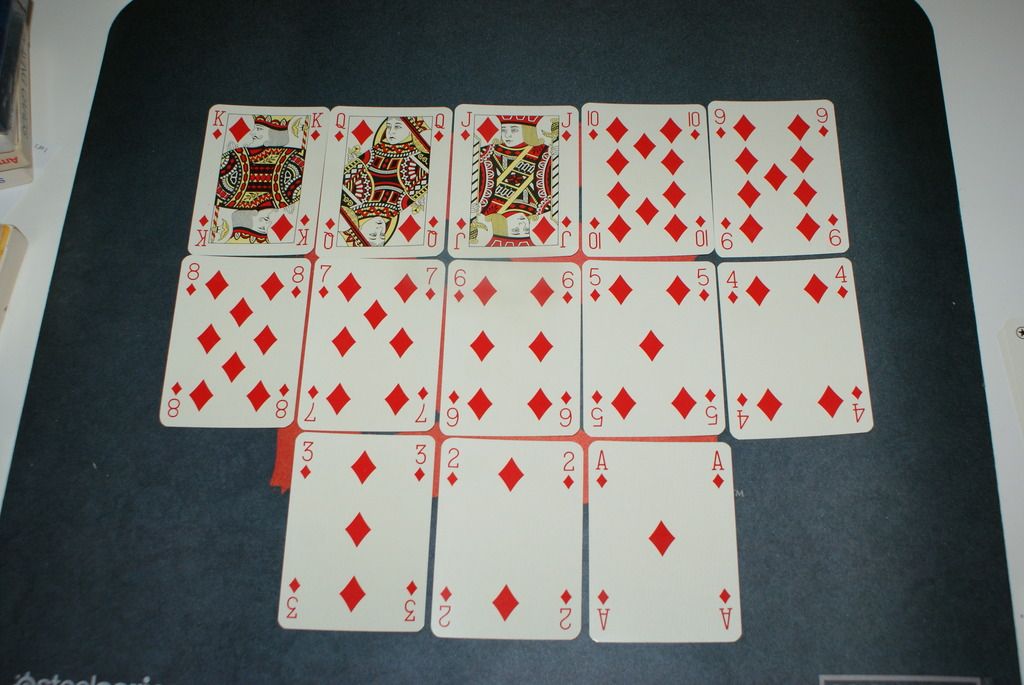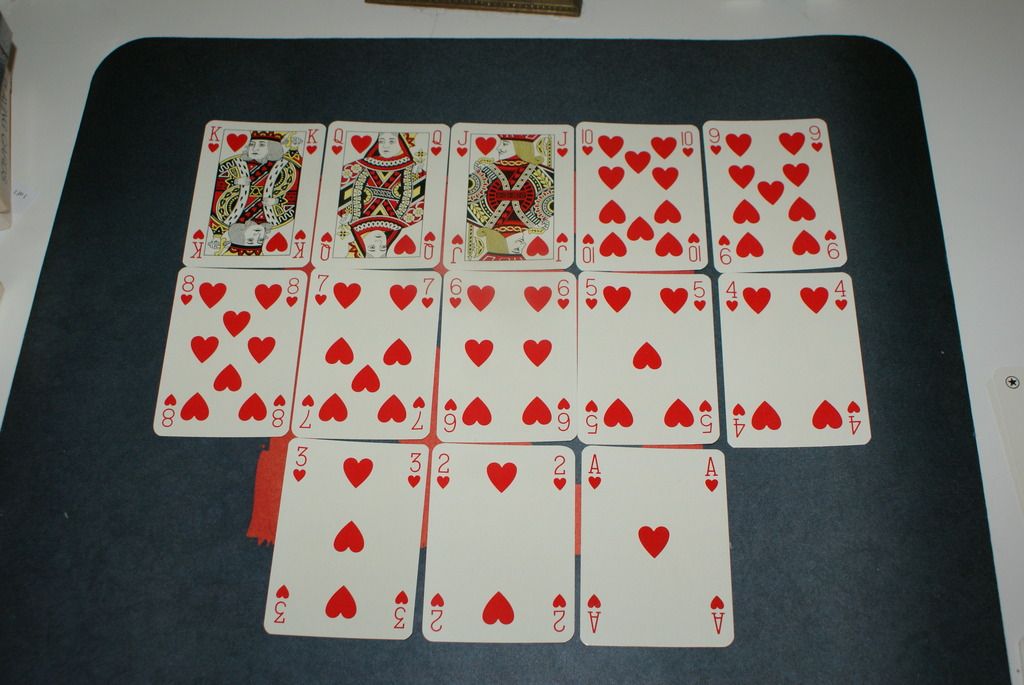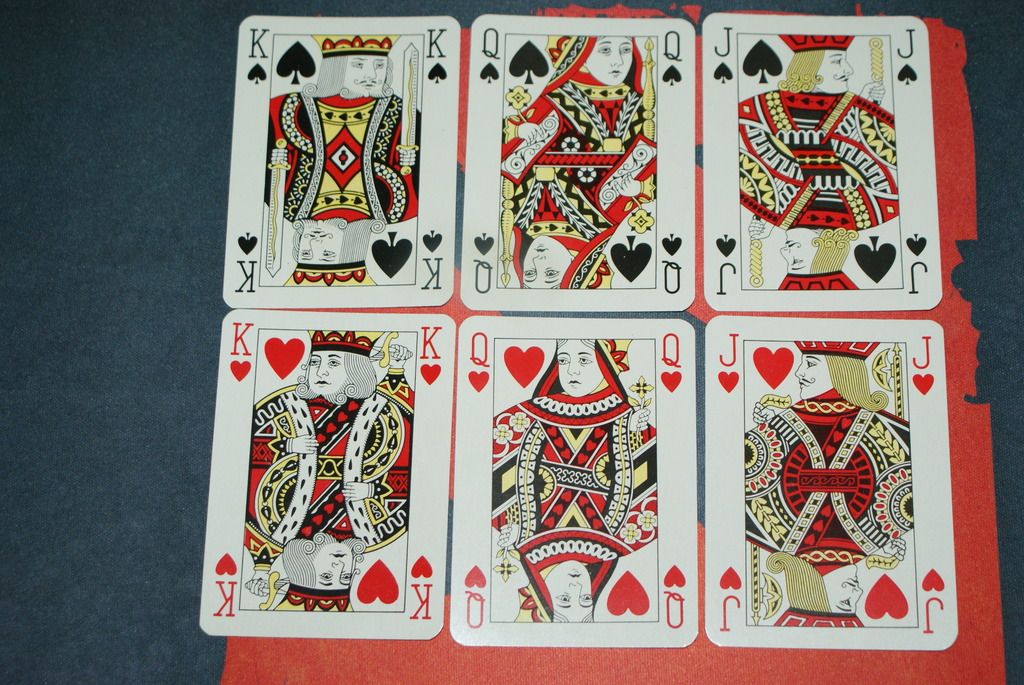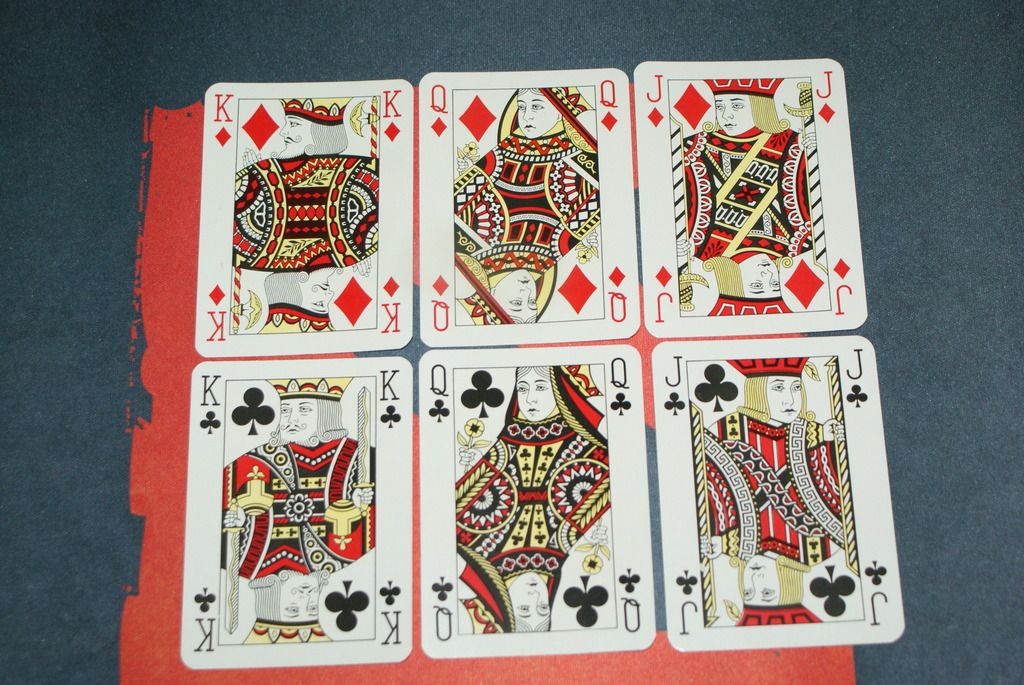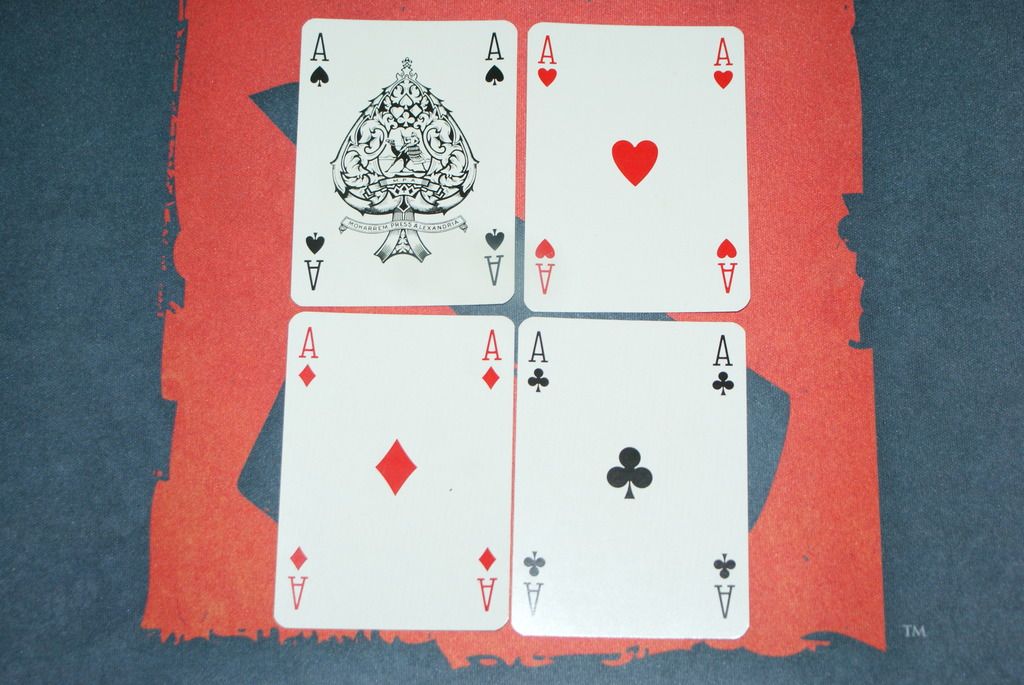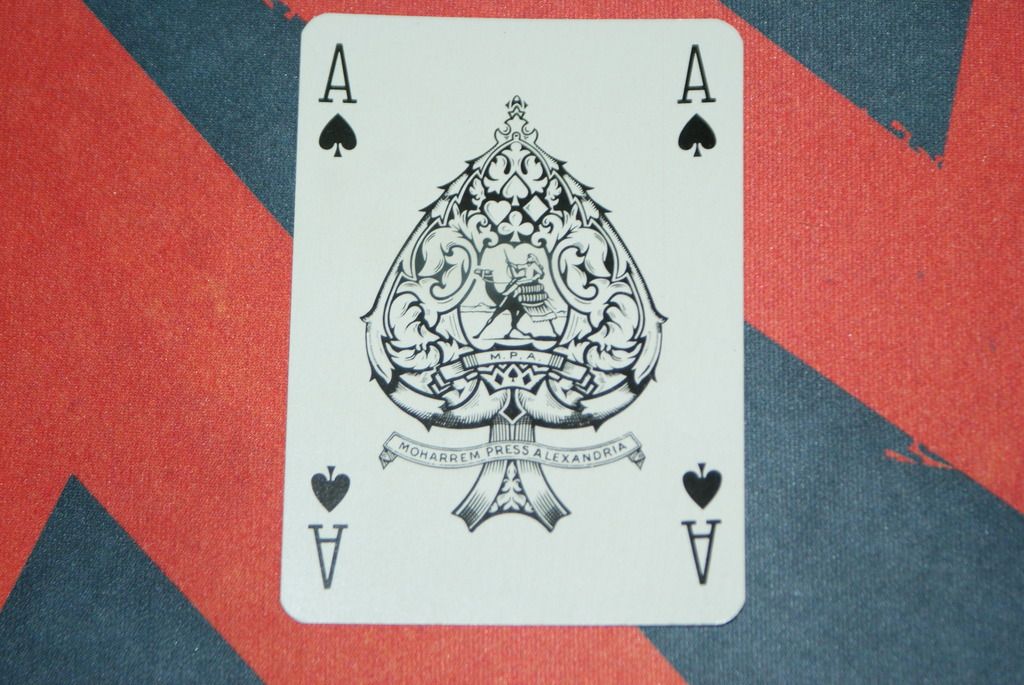Despite the known decks of this kind are very few, in all of them the pattern seems to follow a precise scheme. The main part of the illustration is formed by a rim, whose top part is curved, in the shape of a horeshoe as seen in islamic doorways, windows, friezes and grave decorations. All the free spaces are filled with floral motifs, elegantly painted; the dominant shades of colour in all the cards are yellow or gold and blue.
IMG_0012.jpg
What appears to be a crucial detail for the relation with southern european cards is not only the similarity of the suit signs, but the way the long suits (swords & sticks) are arranged, crossing each other, with the intersecting points highlighted by means of colour changes and additional details. Furthermore, the cards with odd values have a different and more ornate pip that cuts vertically through the others in the center of the card, all of this is also found in most tarot packs.
IMG_0013.jpg
Each arabic suit is composed of thirteen cards,making a total of 52 cards, without any honours, extra subjects nor jokers. Ten cards have pips from 1 to 10, variously arranged, while the last three cards are courts. Due to the islamic precept of not reproducing human figures, only the names of the personages i.e. the ranks of the three cards, are spelt at the bottom in gold arabic letters inside a blue rectangle, while their central illustration shows either one or two large suit signs.
IMG_0014.jpg
The court names are Malik ("King", the highest), Naib ("Viceroy"), Naib Thani ("second viceroy", the lowest). Due to the aforesaid islamic precepts, a female personage among the courts would have never been possible. The three ranks correspond to the one`s found in all Latin-suited and German-suited cards e.g Malik = King, Naid (viceroy) = Cavalier or Ober and Naib Thani (second viceroy) = Knave or unter.
IMG_0015.jpg
At the top of the court cards, in a blue rectangle similar to the bottom one, is a saying or aphorism (a different one for each card). Their meanings are often obscure, or highly idiomatic, but always interesting. for instance -
"With the sword of happiness, i shall redeem a beloved who will afterwards take my life"
"I am as a garden, the life of which will never exist"
"Rejoice in the happiness that returns, as a bird that sings its joy"
